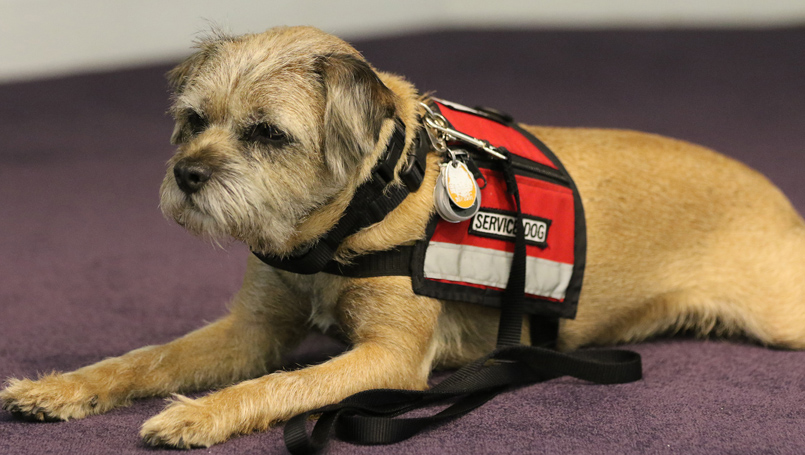Friday, August 12, 2016

After Sandy Keavey, 67, and her service dog, Snickers, moved to Oakwood Common in Dearborn this summer, she asked if she could introduce herself to the community and talk about the role of service animals.
“We thought this was a great idea,” said Donna Brandt, sales manager for Oakwood Common. “While several of our residents own pets, Snickers is the first service dog, and a lot of people are curious and unsure of proper etiquette.”
Keavey agreed. “Snickers is a cute dog, so it’s natural that people want to call or pet him. However, when he has his service vest on, he’s actually working and helping me,” said Keavey. “When someone tries to call or pet him, it’s distracting.”
During a recent Friday afternoon social hour at Oakwood Common, Keavey introduced Snickers, who took center stage while his owner talked about service dogs in general.
She explained that to be considered a service dog, the animal has to perform a task for the owner such as pick up an item, help navigate, or signal with a gentle nudge or paw.
Service dogs of any breed that have a good temperament and good health can be trained to assist people with various disabilities though larger breeds are typically used to help people who have vision and mobility issues. Service animals can also be trained to help owners with a variety of medical issues such as diabetes, seizure disorder, post traumatic stress syndrome, hearing impairment, and other needs.
Keavey, who does not have a visible disability, was very up front in explaining that it would be impolite to ask someone what his or her disability is. She added, “It’s up to each individual to share that information if they’re comfortable doing so.”
When Snickers, a border terrier, is not wearing his service vest, Keavey shared that he’s like any other dog - wagging his tail and ready to play. To demonstrate, she removed his service vest and took him to meet residents who were eager to pet him.
Keavey, who is originally from the Dearborn area, moved back to Michigan from the state of Washington. She shared a little about her fascinating career which has included service as a weather person in the Navy, and then as a physician assistant in the Air Force and Army. She plans to continue working and is currently pursuing a doctorate degree in health sciences.
“The ‘meet and greet’ with Sandy and Snickers was so informative - for both our residents and staff,” added Brandt. “We learned a lot. Now, we’ll know what to do when Snickers’ red vest is on or off.”
For more information about obtaining a service dog, understanding the parameters and learning more about service dog etiquette, you can visit:
